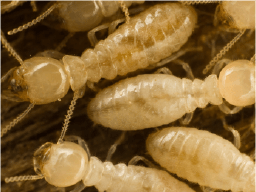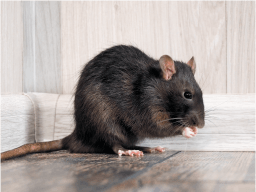Japanese Beetle Bites
Need to get rid of beetles? Read on to learn the answers to all of your important questions. Need help? Call our professionals today to get started.
Schedule Today!What Is A Japanese Beetle?
The Japanese beetle is about 15 millimeters long and 10 millimeters wide. It’s elytra, or protective wing case, is an iridescent copper color and its thorax and head are a brilliant green. In Japan, where it has natural predators, the Japanese beetle is not particularly destructive. In North America, however, where it has few natural control factors, it is a noted pest of around 300 species of plants like rose bushes, grapes, raspberries, birch trees, crape myrtles and maple trees.
Japanese Beetle Behavior
Japanese beetles are well-known for their voracious appetite for chewing on leaves, leaving behind bare-looking leaves with only their veins remaining. This extensive damage can cause the whole plant to die.
Japanese beetles are most active in the height of summer, after emerging in June and July. The next four or five weeks after they emerge is when they feed, mate and lay eggs. During the day, Japanese beetles attract other Japanese beetles by emitting a specific pheromone or through the deployment of the scent of chewed-through leaves. If these tactics attract enough Japanese beetles to your yard, you may eventually come into contact with one or more beetles.
Do Japanese Beetles Bite?
Japanese beetles are not considered harmful to humans or pets. They do not possess strong enough jaws or teeth to break through skin and are not known to bite people. They are, however, equipped with sturdy spines on their legs that can prick the skin. This may cause a histamine reaction on your skin which can resemble a sting or bite if that is your body’s particular reaction.
How To Get Rid Of Japanese Beetles In Your Yard
The key to effective removal of Japanese beetles in your garden or yard is to begin control for adult populations as soon as they begin to emerge in May, June or July. If you have the time and inclination, you can attempt to hand-pick adult beetles from affected flowers and trees as they begin to emerge. This helps to reduce the number of beetles that signal to others that they have found a good food source, increasing the number of Japanese beetles in your yard. If hand-picking small, prickly beetles off bushes and shrubs sounds like it is not your thing, call a pest professional to take care of your Japanese beetle problem as soon as it becomes apparent.
Find A Pest Specialist For Beetle Control
If you are concerned about beetle control for your home, please give us a call or fill out the form on this page. PestControlExperts.com is a team of experts who are highly qualified to provide the best recommendations for you and your home, no matter which part of the United States you live in.
Call 855-891-5410














